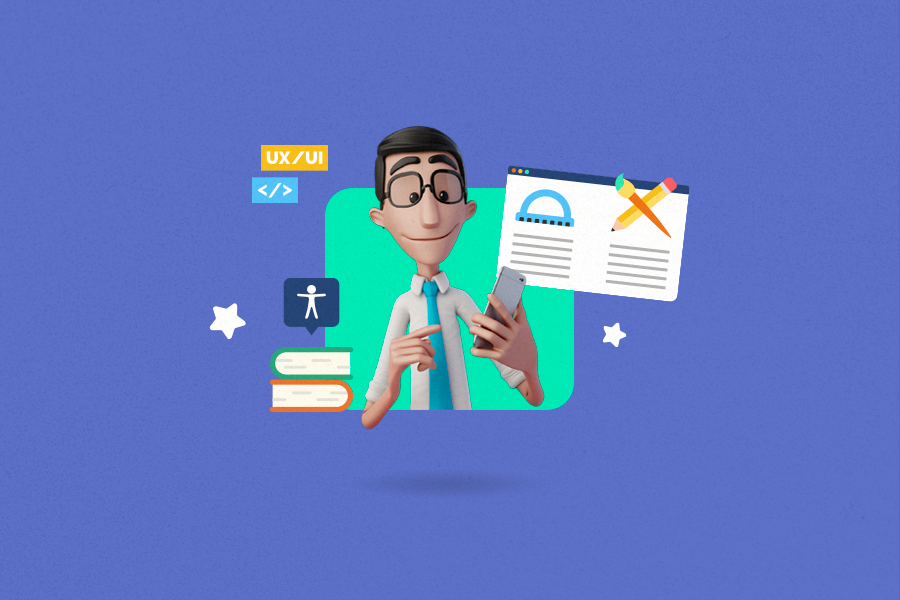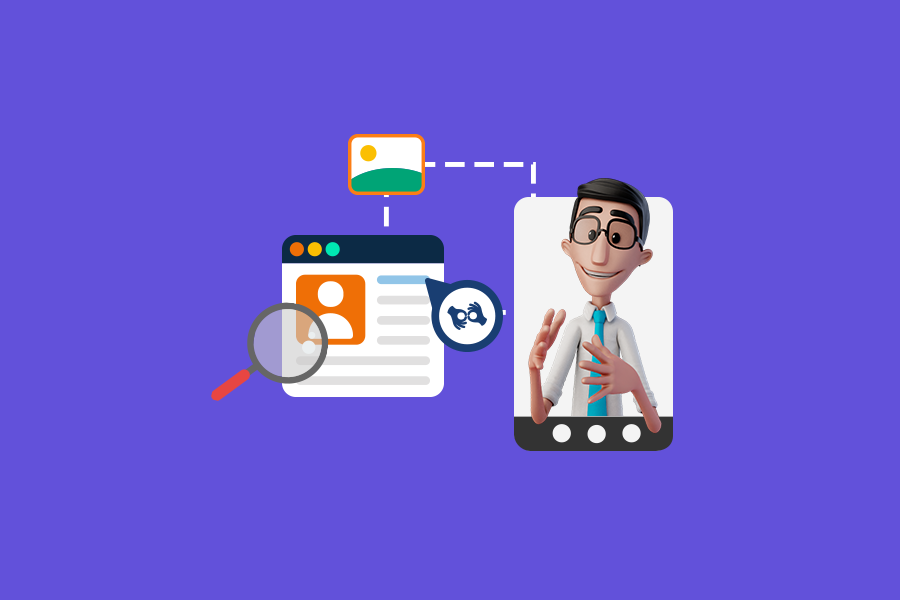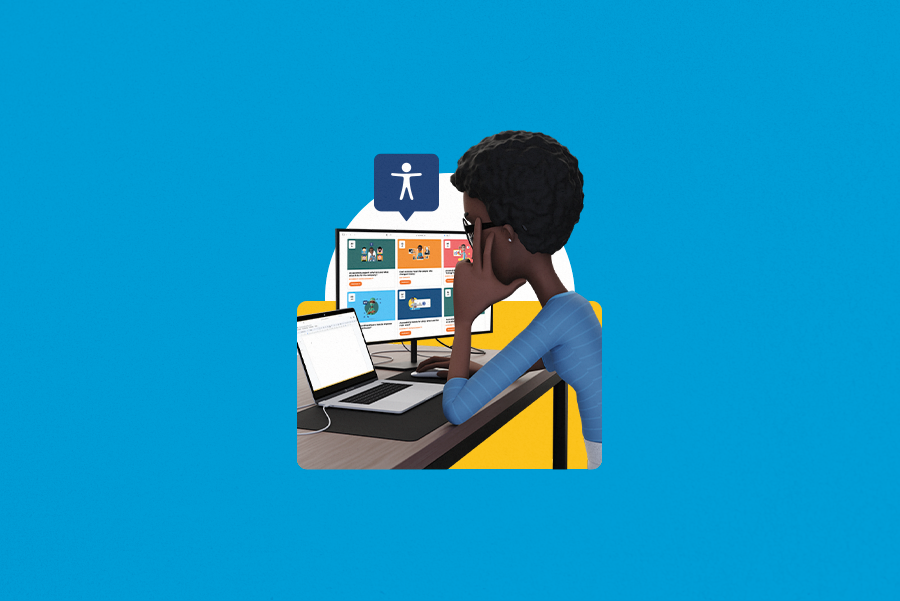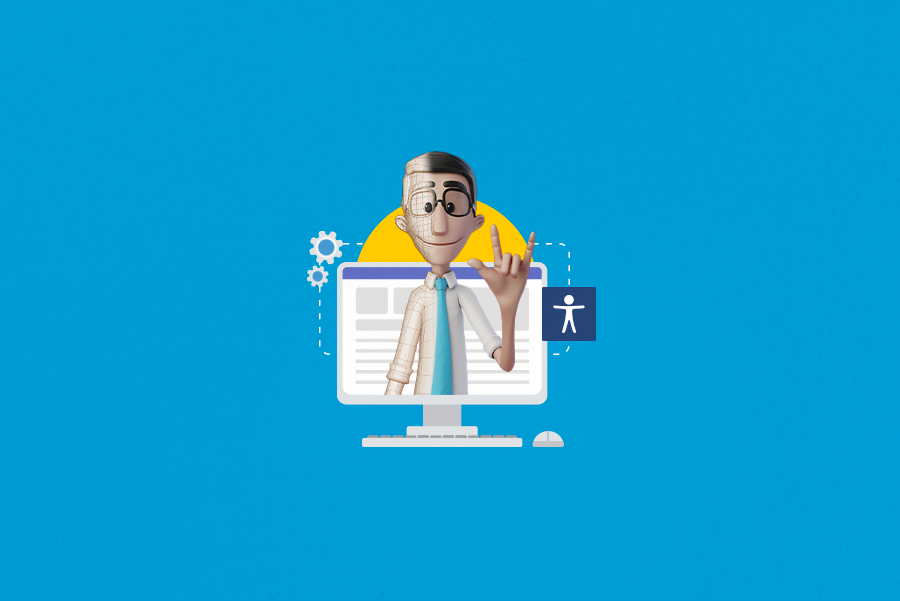
Accessibility In UX Design: What Is It & What Are Its Principles

Accessibility is very important to ensure that all people, regardless of their abilities, can interact with the world with autonomy and equality. This is essential both in the physical and digital worlds. Unfortunately, there are still a lot of barriers and challenges that people with disabilities have to face when navigating the web. For instance, did you know that only 2% of websites in the United States can be considered 100% accessible? That is where accessibility in UX Design comes into place.
What is accessibility in UX Design?
To sum it up, great UX Design consists of three main pillars: usability, graphic design and accessibility. This gives you a good idea of how much of an important role accessibility plays in it, right?
Well, this happens because UX professionals always strive to design with a user-centric mindset. This means that whatever is designed, be it a website, a service or a product, must be created, adapted and presented in a way that all users can effortlessly interact with it, accomplishing their tasks with autonomy.
For implementing accessibility in UX Design it is imperative for diversity to be present, but we will dive deeper into this in a moment.
What is the difference between accessibility and usability in UX Design?
These two concepts are often misinterpreted as synonyms. Although they do in fact overlap, they focus on different aspects of UX Design. Let’s understand more about it.
First, a design can be considered usable based on three key components: consistency, learnability and efficiency. Together, they ensure that the final product provides a satisfying experience to the audience in general.
On the other hand, accessibility is put in place to ensure that all users, regardless of their abilities or conditions, have the exact same satisfying experience.
In theory, usability would already embrace accessibility aspects, but that is not the reality, not focusing on the special needs people with disabilities can have.
Why should we make design accessible?
Did you know that by not making your design accessible you are excluding about 15% of the world’s population? Yes, this does seem like a big number indeed, so how about we make our products and websites accessible?
Also, creating accessible designs is the right thing to do. You will be contributing to a more inclusive society, in which anyone can use products and services without worrying about whether or not they will work for them.
From a business perspective, being accessible can also open many doors for you. Without imposing as many barriers in your relationship with customers with disabilities, you will be able to communicate with a wider audience. Also, it can prevent you from receiving some very undesirable lawsuits.
What are the principles of accessibility in UX Design?
Here are some of the main guidelines you can follow for creating accessible designs. Come check it out:
1.Empathy
First of all, empathy is of the utmost importance. You can only create accessible designs if you understand the struggles of the people who need it. So, you should look at your projects from the perspective of your user, and most importantly, talk to them!
2.User research
User research is essential to any kind of project. However, if your focus is on accessibility, as it should be, make sure to reach out to all kinds of people with all types of different needs. This way, they can participate in the design process to help create a better final product.
3.Inclusivity
This connects to the previous topic. You must include all of your user personas in the development process, and it is even an advantage if you have a diverse team working on your design project.
4.Control on navigation
Users may want to navigate your website in different ways, with a mouse, mousepad, just using their keyboard or even with the assistance of an assistive technology. So, ensure that you can provide them maximum control over how they can interact with your platform.
5.Context
People can interact with your website in various contexts, while walking or laying down, and in different devices as well. Therefore, UX designers must make sure that the product is equally responsive and usable in all environments and conditions.
What are the key benefits of considering accessibility in UX Design?
There are numerous benefits of incorporating accessibility in your UX Design. Here are some of them:
- Better overall usability and user experience;
- Better search results;
- Bigger audience coverage;
- Enhanced public image for your brand;
- Improved SEO;
- Promotion of good coding practices;
- Quicker loading time;
- And last but not least, accessibility drives innovation, and who does not want that, right?
How do you ensure accessibility in UX?
It is pretty simple. Basically, just follow the existing guidelines for accessibility in UX Design. Think of them as a checklist to guide you in the development process of your design. Check it out.
Create user personas
As we have said before, they must be representative of a diverse audience, including people with all kinds of different needs and backgrounds.
Design for all platforms and devices
There are many different types of devices and operating systems from which people can access websites and different contents. So, make sure that your design works well in all of them.
Organize the content logically
Think about this, people will only be able to understand your content, if it has a logical organization behind it. Otherwise, it will just be a bunch of disconnected information that is impossible to comprehend. A good way to ensure that you are organizing your content logically is to create an information structure that you want to follow throughout the whole website or product.
Ensure consistency in design
Ensure that there are no surprises or unexpected roads your user will take when navigating through your website. Also, consistent designs are easier for assistive softwares and devices to understand, and therefore perform better.
Use accessible fonts
Prefer fonts that are very intuitive and easy to read. It is better for people with dyslexia and also for the broader audience. In general, opt for monospaced simple sans serif fonts.
Choose appropriate color contrast
This can be a bit tricky, considering that most brands have already clearly defined aesthetics and a visual identity. However, you can always find a good color contrast that makes your content visible, accessible and in line with your company’s branding strategy.
Include alt-text for media content
Alt-text, which is short for alternative text, consists of a written description of all your audiovisual content, such as images, videos and animations. This is a key factor to keep in mind, so people that rely on screen readers can understand all of the important information on your website.
Provide transcriptions and subtitles
Transcriptions and subtitles are extremely helpful for everyone. It aids those who do not understand the content’s language, those with hearing disabilities and even those who cannot turn on the volume at the moment. It is worth saying that the more translated languages you have, the better, including for Sign Languages.
Avoid excessive animation
Some types of animation can cause seizures in some kinds of people. So, it is better to avoid flashing images or images that move too fast and in a loop.
Ensure meaningful anchor text
Although anchor texts are a great SEO strategy, be careful not to overdo it. Insert hyperlinks only when it adds value to your content. This way you do not frustrate or confuse the user with too much disposable information.
Use proper headings and html tags
Usually, assistive technologies rely on headings and html tags to make sense of a website’s content. So, take this into account when creating your design.
Make the design screen-reader friendly
Screen readers are one of the most common assistive tools there are, so it is important to make sure they function properly in your website.
Include keyboard shortcuts
We have already said that providing different navigation options is important. So, make sure your website can be easily accessed and navigated using only a keyboard, mouse or trackpad, without having to rely on more than one tool at a time.
Use accessibility tools
There are multiple accessibility tools available nowadays, so use them to test your digital designs. Then, your UX Design team can already work on solving potential problems before they are even brought to the public.
Test with different users
We have already mentioned that the participation of people with disabilities is very important throughout the whole process of creating an accessible design, and it holds up for testing the final product. Aside from people with disabilities, test your project in different contexts with different people.
What is an example of accessibility in UX Design?
If you put in action all of the tips, guidelines and principles we have shown you so far, you will find yourself with a very good example of an accessible design! Nevertheless, here are a few important reminders and examples of accessibility in UX Design:
- Good contrast in your websites and products;
- Have a webpage in which you can easily zoom in and out without making users have to scroll your content horizontally;
- Having a website that makes it possible for all accessibility softwares to perform perfectly
- And overall, ensuring that anyone anywhere can navigate through your website with ease and having access to all necessary information and functionalities.
Conclusion
To sum it all up, designing with accessibility in mind makes it possible for people with any kind of disability or condition to perceive, understand, navigate, interact with and contribute to the web in an equal and autonomous manner.
The Hand Talk Plugin, which is soon becoming available to the United States’ audience, is a great tool to help your design become more accessible, and for users to have an even better experience with your brand.


